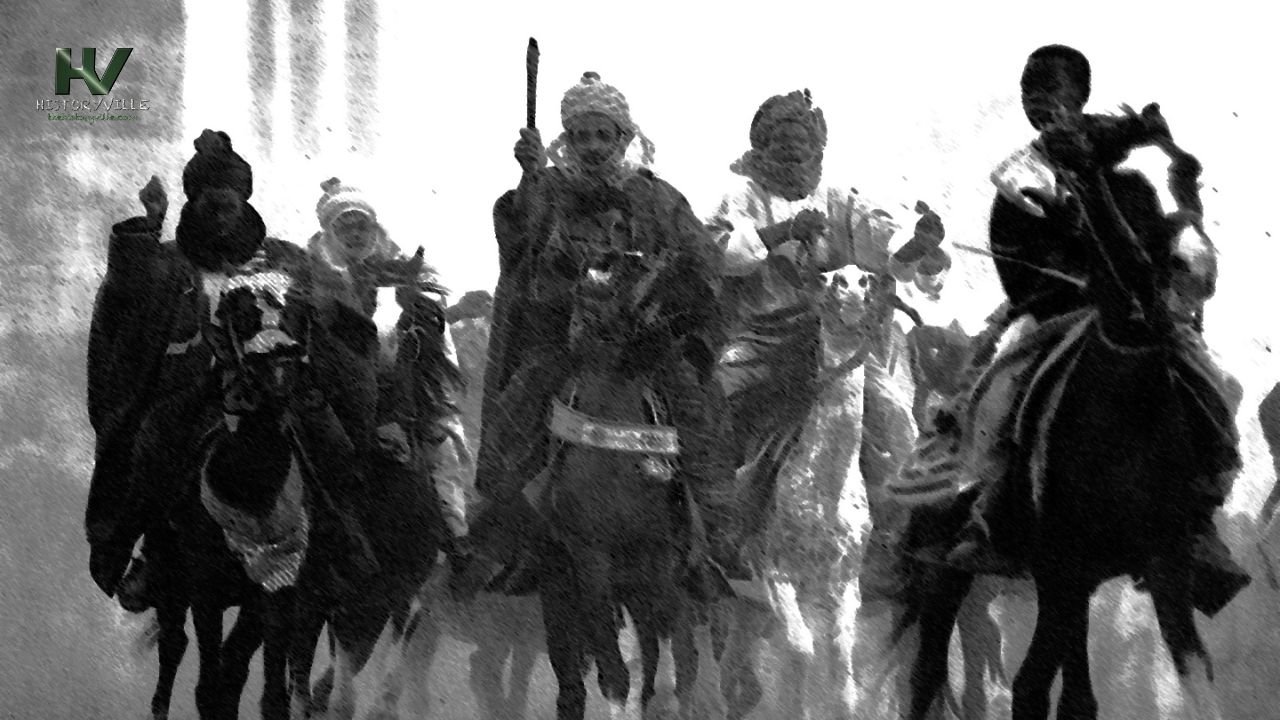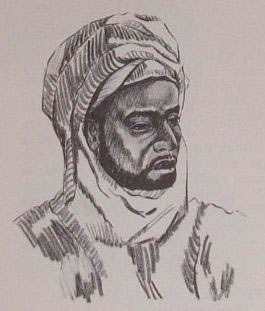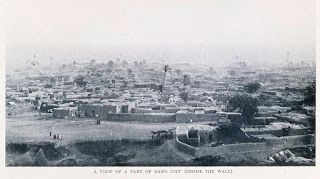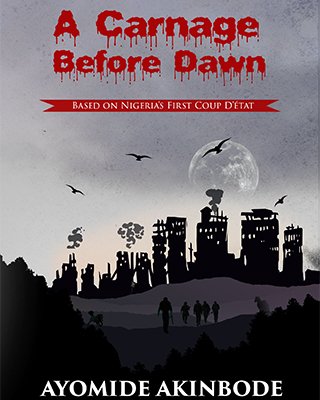No products in the cart.

The Fulani Conquest of the Hausa City states was because of a holy war spurred by righteous indignation, which consequently gave birth to the Hausa-Fulani civilisation we know today.
In the 19th century, one of the biggest Empires in Africa, the Sokoto Caliphate, was established. This Caliphate majorly formed what is now known as Northern Nigeria, which records about 75.4 million people from various tribes and ethnicities, with the two major ethnic groups being the Hausa and the Fulani.

This article goes back in time to way before the advent of European colonialism and the amalgamation of Nigeria, to the successful and independent kingdoms of the Hausa people and the Fulani conquest of their states.
Contents
Tracing the Origins: Who are the Hausa People?
The Hausas are a large cultural group of people found in Nigeria and some parts of Niger. Although believed to have existed since the 9th century, there is still no consensus as to the exact place or time of origin of the Hausa people. Different attempts have been made to explain the origins of the Hausas, some more mythical than others. However, one thing is sure: the origin of the Hausa people is a complicated thread woven into history.
Creation folklore often tells about the origin of the Hausa people revolves around the legend of Bayajidda, who is regarded as their progenitor. According to this story, Bayajidda– the prince of Baghdad– arrived in the old Hausa city-state of Daura, after being exiled from his Kingdom in Baghdad. On his arrival at Daura, the heroic Prince saved the town by killing a giant snake that terrorised the settlement and its inhabitants by blocking the only source (often said to be a well) of water.
As a reward, the prince was married to the queen of Daura. This marriage between Bayajidda and Queen Magajiya saw the birth of seven sons who, apparently, formed the seven true Hausa City States. The other seven states, commonly called the illegitimate states, were, as you may have guessed, founded by Bayajidda’s illegitimate sons from his supposed concubines.
Admittedly, this creation myth is questionable as it has no evidential proof and is insufficient to justify the diversity witnessed in the Hausa people. However, myths are often sprinkled with some truth elements, and this creation myth does suggest a certain fact supported by modern historians– the Hausa people may have roots tied to Arab influence.
Modern History accounts that the Hausaland may have originated from the migration of Arabs from regions in the Middle East and North Africa, such as northern Sudan, into West African lands in the 5th to 7th century, in small quantities from which they grew into the culture.
Formation of the Hausa City States
A common question that arises when navigating the history of the Hausa city-states is that of the accurate number of states. Are there seven city-states or, more accurately, 14 city-states?
Multiple sources deem both dispositions to be correct. The seven city-states refer specifically to the Hausa Bakwai, also known as the seven true states, and the fourteen city-states add the “Banza” Bakwai, quite literally “illegitimate” seven states.
The Hausa Bakwai consisted of Biram, Daura, Gobir, Kano, Katsina, Rano, and Zaria, while the Banza Bakwai consisted of Zamfara, Kebbi, Yauri, Gwari, Nupe, Kororofa, and Ilorin. Some consider all 14 cities to be part of the Hausa states, while others give precedence to the seven true states only.
This demarcation may be justified as the Banza Hausa were isolated from the true states for some time due to disagreement over their legitimacy. Considering the Bayajidda legend, it can be inferred that both the true and illegitimate states similarly originated from Bayajidda’s line. Nevertheless, it is also probable that the so-called illegitimate states were existing regions that came under the rule of the Hausa Bakwai and were incorporated into the Hausa City states.
Who are the Fulanis?
The Fulani, also called the Fulbe, are said to be a tribe of Arab origin, descending from the Berbers in North Africa. The ethnic groups are predominantly found in West Africa, but they are nevertheless spread across other countries in Central and East Africa.

It is believed that the Fulanis found their way into West Africa through migration from the Middle East and/or North Africa, with the first significant cameo dated to around the ninth century. The group, being nomadic, moved around a lot and was not so easily integrated into societies. Sometimes, they settled down in a few places where they built small communities. This nomadic history may account for how the Fulanis are often spread across many countries and regions, regardless of their size.
It can be observed that the Fulanis are not often the majority ethnicity wherever they are, but they nonetheless usually have their presence represented. Hence, it is not shocking that the Fulani people were inhabitants of the Hausa city-states– a place where they eventually built the first and most influential Fulani empire following their execution of a holy war referred to as Jihad on the Hausa states.
Embers of Conflict: Pre-Conquest Fulani and Hausa Relations
It would be disingenuous to propose that the Fulani jihad wars against the Hausa city-states have a single cause. On the contrary, it seems like the dam of accumulated frustration caused by the evident difference in the structures of these two societies finally broke.
On one hand, there was the prevailing corruption and immorality of the leaders. The Hausa lands were characterised by perpetual slave trade and practice, as well as extortion and unjustifiable taxation. Perhaps, oppression is indeed inseparable from revolution. Is it a surprise, then, that minority tribes would seek freedom under the rule of oppressive leaders?
It did not help either that there was constant discrimination in Hausa land that resulted in the poor treatment of smaller groups and ethnicities in the Hausa city-states, including the Fulanis. Quite naturally, the group sought respect, which could only be derived from economic and political empowerment.
Another strain in the relationship between the Hausas and the Fulanis may have been caused by the clash of economic activities. The Fulani people were majorly herders, a profession true to their nomadic origin; however, the growing population of the Hausa city-states infringed on the Fulanis’ need for land. This undoubtedly would have added to the already-strained relationship between these two groups.
It must also be noted that the Fulanis were predominantly strict adherents of the Islamic faith, contrary to the Hausas, who were indigenous in their religious practices. This difference certainly caused tensions between the Fulanis and Hausas, as can be observed in Uthman Dan Fodio, the devout Fulani Muslim who was discontent with the hybrid mix of paganism and Islam practised in Hausaland, and eventually declared a holy war and established the Islamic Fulani empire.
Usman Dan Fodio and the Fulani Jihad wars of 1804
Usman Dan Fodio is unarguably the key figure and main character of the Fulani conquest of Hausaland. On December 15, 1754, Dan Fodio was born in one of the Hausa City states, Gobir, from where he moved around various parts of Hausaland in his search for education. Often believed to be a descendant of the Toronkanwa tribe, Dan Fodio learned in various cities under various teachers, most notably Jubril Bin Umar, an influential religious leader and scholar in Agadez, a southern region in the present-day Niger Republic.
As the years passed, Usman Dan Fodio grew in the knowledge of Islam, the Quran and philosophy, becoming a learned intellectual, mystic writer, and active teacher of Islam. Expectedly, he began to amass a gathering. Some of these followers were people who desired to learn under Dan Fodio in a teacher-student relationship. Others were probably drawn by his constant display of wisdom and grew in their reliance on him for religious as well as political insight.

Usman Dan Fodio apparently tutored the Sultan of Gobir’s son, but unsurprisingly, it was not long before the Sultan began to perceive the scholar as a threat. This is, in fact, quite a natural response to be expected because whether it was due to the latter’s growing popularity with the people of Gobir, or his constant critiquing of the kingdom’s practices, one can assuredly say no ruling king would be comfortable with a reformer like Dan Fodio.
In 1803, Dan Fodio and his band of followers were eventually exiled by Gobir’s son, King Yunfa. This was perhaps the beginning of the undoing of the Hausaland, as “undoing” is indeed an accurate word to describe what happened to the Hausa city-states. Being ousted made Dan Fodio and his followers migrate to other areas where he continued his propagation of Islam, picking up more followers and potential volunteers in his Jihad wars.
In 1804, a Jihad was formally declared by Dan Fodio after he, together with his Islamic followers, was seemingly attacked, and volunteers from the Hausa lands joined his army of Jihad fighters. Perhaps not all who joined Usman Dan Fodio’s Jihad did so for his reasons; nevertheless, one valid assumption can be made: they probably had their share of the bone of discontent against how the Hausa city-states were being ruled and found a way to express this discontent through Dan Fodio’s movement.
Gobir was the first city to be conquered by Dan Fodio’s army, and for the 11 years that followed, the Jihad moved steadily across the other Hausa states until 1815, when the whole of Hausaland, including some parts of present-day Cameroon, was brought under the Fulani Muslim rule.
On April 20, 1817, Usman Dan Fodio died. He was 62. He left the administration of his legacy, the Sokoto Caliphate, in the hands of his two prominent disciples, his son, Muhammad Bello, and his brother, Abdullahi.
Although Sheikh Usman Dan Fodio did not witness the entire timeline of his Caliphate, his impacts remain celebrated with monuments such as the prestigious higher institute of learning, the Usmanu Dan Fodiyo University in Sokoto, named after the revolutionary leader himself.
Impact of the Fulani Conquest of the Hausa City States
One may be right to say the Sokoto Caliphate was the most unified the Hausa city-states had ever been, as the emirates introduced many sociopolitical as well as religious reforms that further solidified the Caliphate as a single entity.
Firstly, although the Fulanis had taken over Hausaland, it is as though the Hausas absorbed them instead, as Hausa was adopted as the general or official language of the Caliphate. In such a context, the “Hausa people” may then be used to refer to both Hausa and Fulani, and even other smaller tribes or ethnic groups within the Caliphate. At this point, this centralised empire evolving into Northern Nigeria can account for the superficial lumping of northerners and the common misconception that all northern tribes are “basically the same.”

Furthermore, the centralisation of the Fulani power did not end with a general language. As mentioned earlier, contrary to how it is today, the Hausa people were mostly pagans who practised indigenous religion or spirituality sprinkled with little bits of Islam. However, with the Muslim Fulanis taking over came the introduction of Islam as a core religion. In fact, Islam was as religious as it was political in the Sokoto Caliphate.
The Caliphate was a theocratic empire, and by inference denoted a rulership or government by precepts, laws and practices according to the Quran. In simpler terms, this means that the political leaders were the religious leaders and vice versa. It is in this way that Islam became the most practised religion in the Caliphate and still is in present-day Northern Nigeria.
Uncomfortably, it is also worth considering that the Fulani conquest may have inspired other religious militias such as the Sharia warlords, the Boko Haram movement and so on. Although the results of these movements differ, it is a fact that they employ the same process and even the same justification for their actions of war.
The Emirate ruling system in the Sokoto Caliphate
The colonial rationale fuelled the incorrect idea that African people, states and kingdoms needed governing, yet the opposite is true. European colonialism did not introduce structured and functional rulership into African societies. These political systems existed and were in practice before the advent of colonialism, and the Sokoto Caliphate is a testament to this.
Upon the formation of the Caliphate, Usman Dan Fodio was able to centralise the Fulani power across the region, pioneering the Emirate ruling system, which is still in use in northern Nigeria today (although now subject to the Federal Laws of Nigeria). The Emirate system divided the Caliphate into two emirates, with the eastern emirate headquartered in Sokoto and the western emirate in Gwandu Kebbi. Under the East and West Emirates were sub-forms of the emirate, each headed by the Emir, who functioned as both the spiritual and political leader of the Emirate. All other Emirates were subject to the two Emirates heading the east-west emirates.
By 1837, the Sokoto Caliphate had grown significantly to a population size of reportedly about 20 million people, with slaves accounting for almost 50 per cent of the population. The Caliphate continued to thrive for a century, before the bane of every African culture’s existence then came into play – the European invasion and colonisation in the 20th century.
The Decade of Trouble: British Colonisation of the Sokoto Caliphate
Following the Berlin Conference of 1884, European countries like Britain and France moved on to claim African kingdoms. The British colonisation of the Sokoto Caliphate happened in a series of gradual conquests of the emirates. By 1897, the British had enough influence in the Nupe emirate due to the operation of the Royal Niger Company in charge of the Niger-Benue waterways. This influence resulted in commercial tension between the Emirate and the British.
The foreseeable war soon broke out, and, sadly, the Nupe army of about 10,000 men was defeated, and in 1901, the Nupe Emirate, including today’s Kontagora and Bida, was taken over by the British.
Emirates like Kano strongly resisted the British attempt to conquer their lands. Reports are that the Emir of Kano, having seen what happened to other emirates, prepared for any unforeseen strike. Lord Frederick Lugard caught wind of the preparations and declared Kano an enemy state. In 1903, the British forces marched towards Kano, and despite the strong resistance from Kano’s 800 cavalry and 5,000 foot soldiers, the British Army breached the defences and Kano fell.
The Sokoto and Kano emirates reportedly put up the strongest resistance to the colonisation, as is expected, since these two emirates were the most influential in the Caliphate. This is evident in the fact that Sokoto State, today, is still referred to as the “Seat of the Caliphate.” Unfortunately, the measly arrows and spears of the Sokoto warriors stood no chance against the more destructive Maxim guns of the British Army. If only the defiant hearts of the Caliphate fighters could be turned into weapons, they might have put up a worthy fight. Either way, the Caliphate fell to the British forces due to this disadvantage.

The British colony under the governance of Frederick Lugard joined the East and West emirates together, threw in the few additional regions conquered, and declared the region as “Northern Nigeria” in 1904. Thus came the end of the prestigious Sokoto Caliphate and the start of a new era in the northern region.
The Hausa City States Today
With its significance and influence in Africa, particularly in West African history, it is not an exaggeration to say the Hausa city-states laid the foundation for the Sokoto Caliphate that evolved into Northern Nigeria. To take it a step further, it may be just accurate to say the Hausa city-states walked so that Northern Nigeria could fly.

Today, the northern region takes up a total of 19 of 36 states in Nigeria, namely: Kano, Kaduna, Katsina, Zamfara, Sokoto, Kebbi, Borno, Bauchi, Gombe, Yobe, Adamawa, Taraba, Niger, Plateau, Nasarawa, Benue, Kwara, and Kogi. These states occupy about 70per cent of the total land mass of the country, making the North the largest and most populous region in Nigeria.
It is often said that the pen is mightier than the sword. However, Usman Dan Fodio’s successful conquest proves that the combined forces of a pen and a sword are mightier than one and will always deliver victory. Through his teachings and writings across local settlements in Hausaland, Usman Dan Fodio was able to not only stir up people but also fortify their minds with Islamic knowledge and ideologies that, perhaps, made it somewhat easier to embrace the Jihad reform. By so doing, more people were motivated to pick up swords and guns and stake their bets on Dan Fodio as the focal point of revolutionary change.
The Fulani Conquest of the Hausa City States remains one of the most, if not the most, successful conquests of Jihad execution in Africa, which brought about an unprecedented political system, one whose ripple effects are still felt across cultures in Nigeria today.
Your support can make a world of difference in helping us continue to bring Nigeria’s rich history to life! By donating to HistoryVille, you’re directly contributing to the research, production, and storytelling that uncover the incredible stories of our past. Every donation fuels our mission to educate, inspire, and preserve our heritage for generations to come.
Please stay connected with us through our social media handles and make sure you are subscribed to our YouTube Channel. Together, let’s keep the stories of Nigeria’s past alive.







Leave a Reply
View Comments